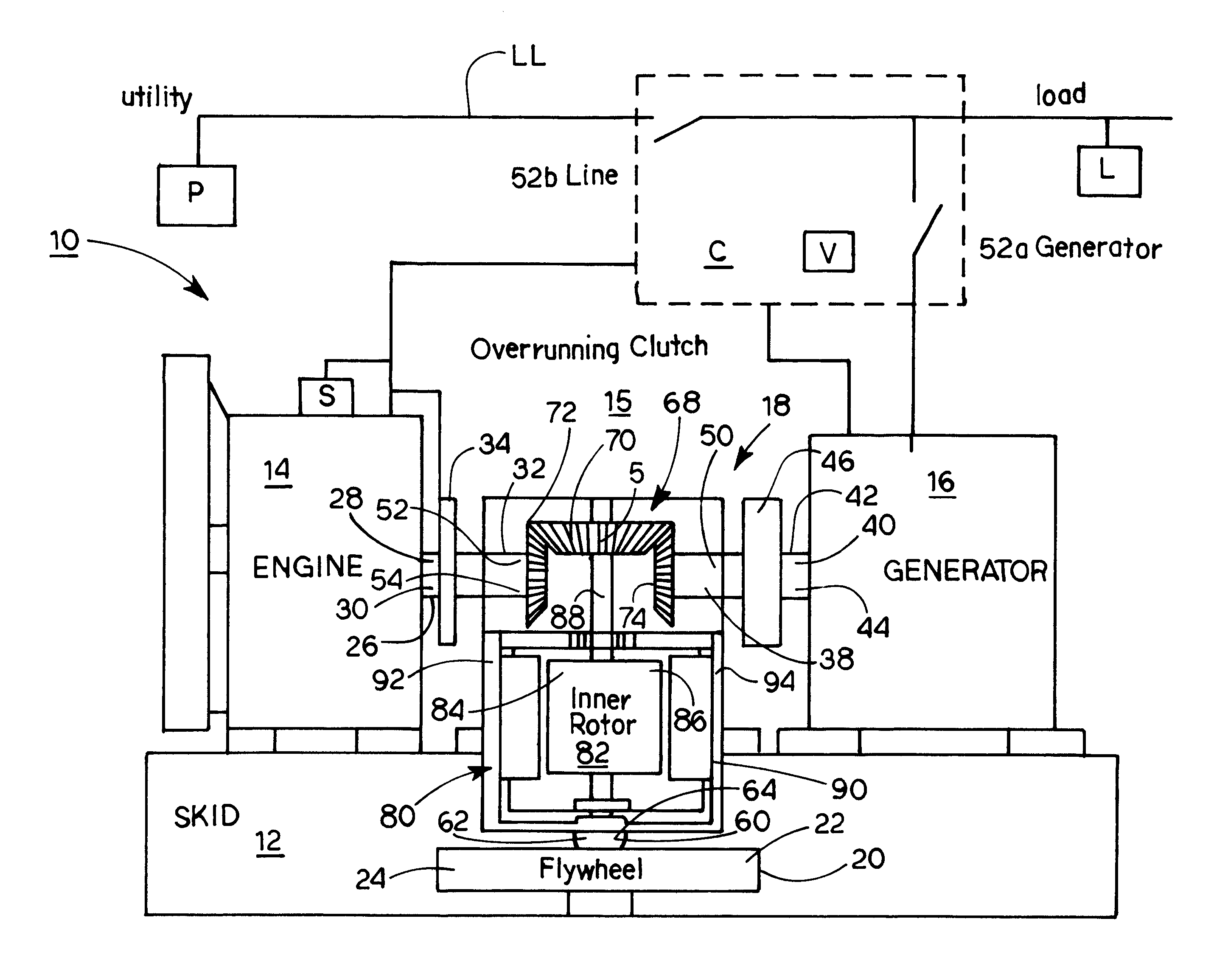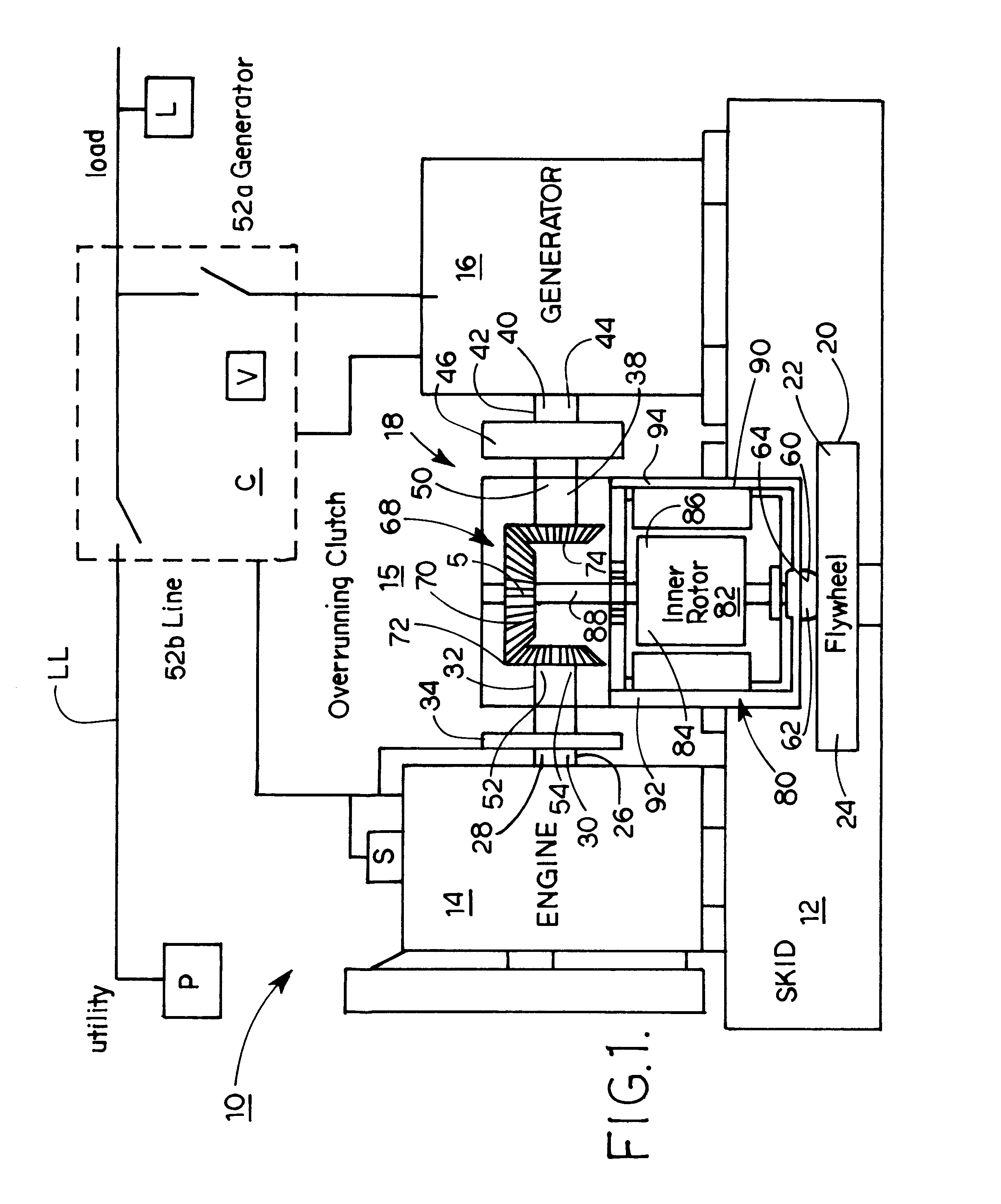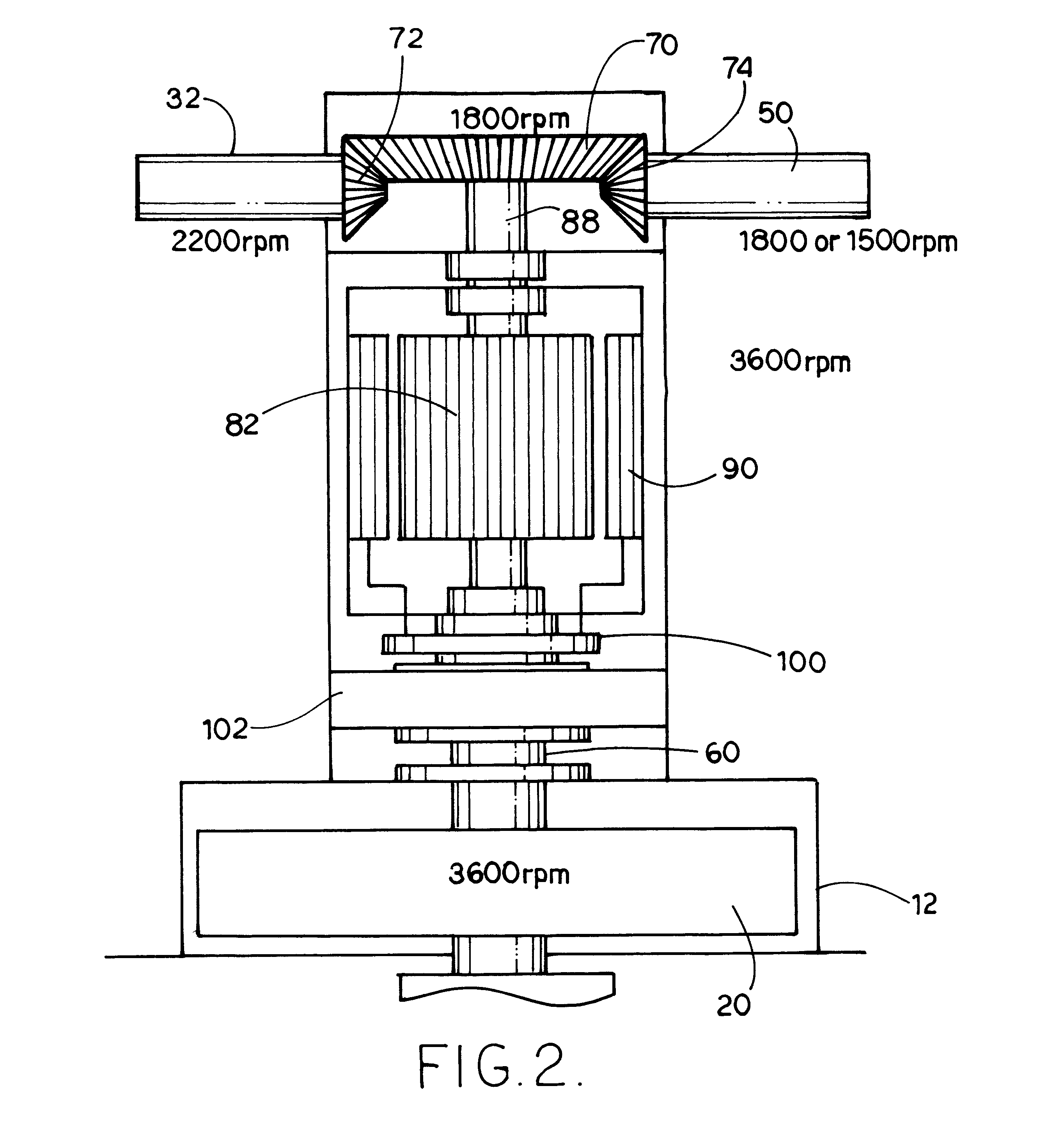Standby power system
a power system and standby technology, applied in the direction of engine starters, machines/engines, emergency power supply arrangements, etc., can solve the problems of delay in switching over to such engine-driven auxiliary power supplies, inability to assume full load, damage to delicate electronic instruments, etc., to achieve smooth and efficient power transfer, safe and convenient use of large flywheels
- Summary
- Abstract
- Description
- Claims
- Application Information
AI Technical Summary
Benefits of technology
Problems solved by technology
Method used
Image
Examples
Embodiment Construction
Other objects, features and advantages of the invention will become apparent from a consideration of the following detailed description and the accompanying drawings.
Shown in FIG. 1 is a first form of a standby power generating system 10 embodying the present invention. A load L such as a hospital, business or the like is powered from a main power source P, such as a utility or the like via a load line LL. During normal operation of power source P, load L receives all of its power via load line LL from source P. However, in various situations, such as storms, equipment failure or the like, there are times when the power level from source P drops below a value that can safely power the equipment represented by load L. This value can be pre-set according to the equipment represented by load L. When the power level from source P drops below this pre-set level, system 10 will take over and supply the necessary power to load L via line LL. Until that time, system 10 is in a stand-by mode...
PUM
 Login to View More
Login to View More Abstract
Description
Claims
Application Information
 Login to View More
Login to View More - R&D
- Intellectual Property
- Life Sciences
- Materials
- Tech Scout
- Unparalleled Data Quality
- Higher Quality Content
- 60% Fewer Hallucinations
Browse by: Latest US Patents, China's latest patents, Technical Efficacy Thesaurus, Application Domain, Technology Topic, Popular Technical Reports.
© 2025 PatSnap. All rights reserved.Legal|Privacy policy|Modern Slavery Act Transparency Statement|Sitemap|About US| Contact US: help@patsnap.com



